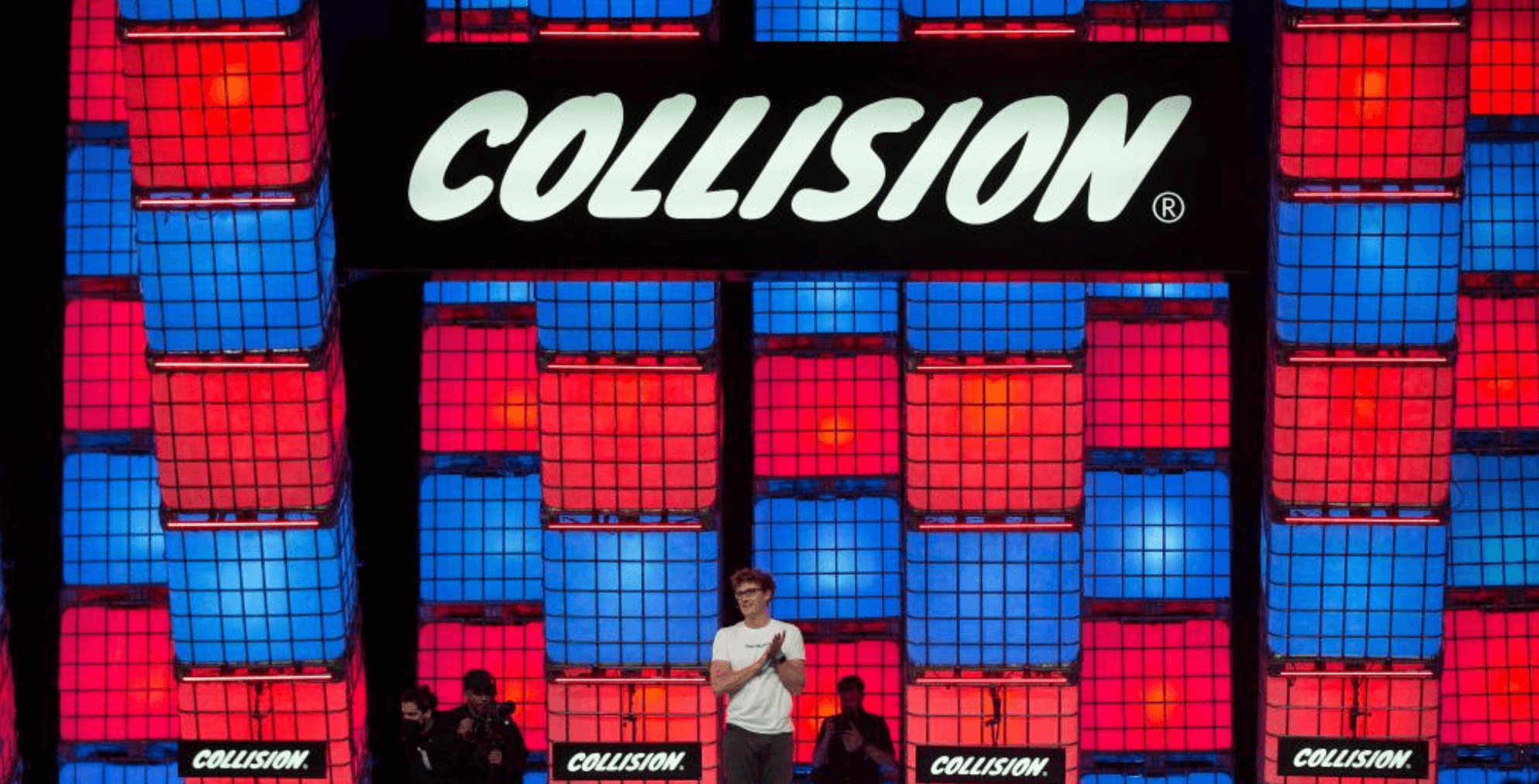The L-SPARK team was out in full force at this year’s Collision Conference where over 35,000 founders, investors, and ecosystem partners showed up after a much-anticipated return since the pandemic forced the global tech conference online two years ago.
While many speakers and attendees acknowledged the timing of the event – which took place following what some consider a tech market meltdown that saw a multitude of layoffs, hiring freezes, and unusual market volatility – the energy in the room was palpable.
Cautious optimism coupled with innovation inspired many of the themes discussed during the 4-day event – the most notable ones being AI, privacy, venture capital, and diversity and inclusion.
AI
Artificial intelligence (AI) and machine learning have been major tech trends for quite some time, but their usability and adoption in real-life scenarios was on full display at Collision.
While no one can predict exactly how AI will play out in the future, the trends and developments showcased at Collision paint a very diverse picture of how AI will become a part of our lives. In reality, AI is already a major part of our everyday life, impacting everything from our search results to the way we shop.
As with many tech-related developments, the advancement of AI has centred itself around two major themes: convenience and automation.
One of the biggest talks at Collision featured a company called Soul Machines. Based out of San Francisco, Soul Machines leverages advancements in deep tech to create a digital twin with the goal of helping celebrities and entertainers connect with their audiences in a whole new way.
Digital twins are able to speak, hear, understand, and think in order to express themselves using a full range of human emotions. The benefit to using a digital twin includes being able to engage with more people at any given time all over the world, while maintaining control over messaging, appearance, and behaviour. Eventually, digital twins will evolve and expand into the metaverse – where major strides towards creating and replicating the efficacy of human intelligence in virtual realities will come full circle.
Privacy and blockchain
Emerging technology and new innovations are capable of gathering and harnessing enormous amounts of data like never before. We often see this take place in advertising practices used to attract customers with the goal of generating revenue.
Companies want to ensure that their ad money is being spent to target real people. At Facebook, an estimated 50% of accounts are run by bots and click farms, resulting in a massive amount of ad spending that is not seen by any real humans.
Beyond just fake accounts, what is the solution to a safer online digital life? Is blockchain a solution? And if so, how does it relate to advertising?
A reported 33% of ads is ad fraud on paid media. Some companies, like DoubleVerify, look at brand safety, view-ability and fraud, but they still don’t identify inauthentic accounts. With Blockchain digital identity, we can agree to anonymize to companies around the world through smart contracts. These companies will not have access to names, addresses and live locations, but rather a persona. We can filter what data is shared with advertisers about us, and in turn which type of ads are pushed to us based on our persona type – curating your own digital experience. In this model, advertisers can ensure the ads they are spending money on are reaching their target demographics, and consumers can have more agency in their data.
Ultimately, the creation of a fair and equitable digital environment is what is needed. Under our current model, no individual owns their data – it’s in the hands of big tech. This data is used to identify what ads are targeted to us. If blockchain digital identity technology isn’t adopted, we’re serving companies, not the other way around. We’re being used in a top down system where we as the digital asset are being taken and monetized at the top. The data that we are producing should be democratized, and individuals should be paid by companies to have access to their data, not large corporations.
Venture Capital
Given the current market, many tech companies predict new challenges on the horizon. Amid widespread market volatility, rising interest rates, and fears of a recession, VCs seem to be turning away from costly scale-by-any-means-necessary strategies and turning towards low-risk, sustainable, economically sound businesses.
This doesn’t mean that VCs are suddenly closing their doors to otherwise good investments, but their pulse on profit is currently shifting to more seemingly balanced ones.
Despite this, Collision speakers made note of Canada’s track record in braving past storms. Most notably, Canadian tech founder Michele Romanow made reference to her start almost 15 years ago where there was very little early stage capital and talent – acknowledging the fact that the ecosystem has made significant strides when it comes to gaining investment.
As the tech sector continues to experience a downturn, VC activity may have cooled down for now. In response, this may give companies the opportunity to re-evaluate their strategies in order to get a clear view of how much they’re spending – with the goal of growing efficiently, not carelessly.
Diversity and Inclusion
The conversation around diversity in the workplace focussed on how companies can leverage technology to drive progress towards improving their diversity and inclusion efforts – including attracting and retaining diverse talent.
In unanimous fashion, speakers and panelists agreed – if you’re not prioritizing diversity in tech, you’re missing out on (and actively excluding) major talent pools.
While attracting diverse talent is important, the objective should be on retaining them. Using technology such as recruitment tools that remove applicant identifiers to avoid bias, comparative tracking methods, or platforms that focus on neurodiversity and disability awareness in order to prioritize equity and accessibility can support a company’s overall strategy.
By taking steps to cultivate a more inclusive workplace, the tech industry can create a more diverse ecosystem where employees feel supported + seen.
Above and beyond the opportunity for professional development through the countless sessions, was the ability to connect with thousands of startups, ecosystem members, and investors. With so much on the go, it can be overwhelming to understand how to get the most out of a conference of this magnitude without being pulled in too many directions at once.
5 ways to get the most out of attending a conference (especially those with 35k+ attendees)
Be intentional – set goals and stick to them
Arguably the most impactful action we took when planning to attend Collision was setting actionable goals both on the team and individual levels.
By ensuring that all members of the team were on the same page about the desired outcomes, it made it easier for us to schedule our days and carve out time blocks for both business development initiatives as well as personal learning.
At the end of each day, our team would debrief about all that was accomplished that day, which kept each of us accountable for delivering on the goals we set out.
Lean on your team members
For L-SPARK, we are in the thick of recruiting for our 9th SaaS Accelerator cohort. One of the primary goals we set out for our team was to connect with startups from our target list. Above and beyond the startups we had already identified, there were hundreds of companies we had yet to even hear of that we wanted to meet.
The team made a concerted effort to divide and conquer the tradeshow floor by dividing it into sections. By leaning on one another and delegating, we were able to cover the most ground possible (literally and figuratively!)
At conferences as large as Collision, it can be overwhelming with the endless amount of people to meet and sessions to attend… by leaning on each other and delegating effectively, we were able to make the most of our relatively short amount of time at the event.
Be a connector
Inevitably, when meeting hundreds of startups, we run into those who may not be the right fit for our accelerator program. This said, the primary goal of L-SPARK is to provide value to Canadian startups along their growth journey; any small part we can play in their success is what success looks like for us.
It is always our goal to connect founders with our partners, alumni, and trusted contacts that may be of help.
By acting as a connector, not only will you help people meet useful contacts and gain helpful information, but you will also reap benefits in return; those you connect will be more likely to refer you for opportunities in the future if you go out of your way to help them now.
Pay it forward!
Identify unique networking opportunities
Outside of regularly scheduled conference programming, many companies will make a point of planning casual dinners and get-togethers for their VIP contacts and stakeholders.
Take some time to chat with major sponsors or conference organizers to get a finger on the pulse of some of these more informal networking opportunities that may be happening.
Then, get connected to key players in order to take advantage of these fun smaller-scale events that yield meaningful connection and fruitful partnerships.
Follow up
It is crucial to follow up with those you meet at any conference in order to take action.
The question surrounding follow ups has always been how to nurture a regular conversation with leads without coming across too aggressively. You want to nurture these relationships and facilitate regular communication naturally. Thankfully, in today’s digital age, technology can further these conversations more than ever before.
Ultimately, understanding what works and what doesn’t, especially when you’re reaching out to so many people, is key. Always aim to improve your post-event communications and don’t be afraid to try new methods.



